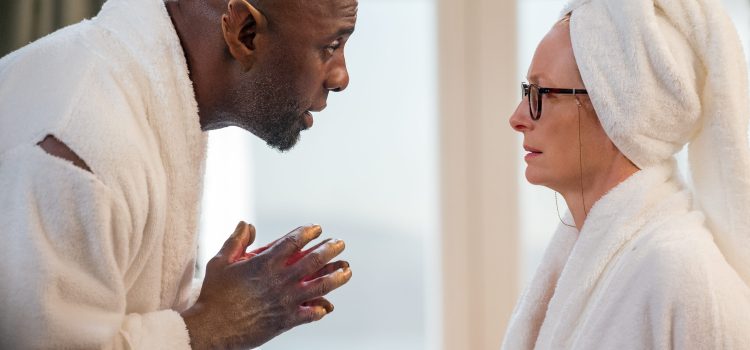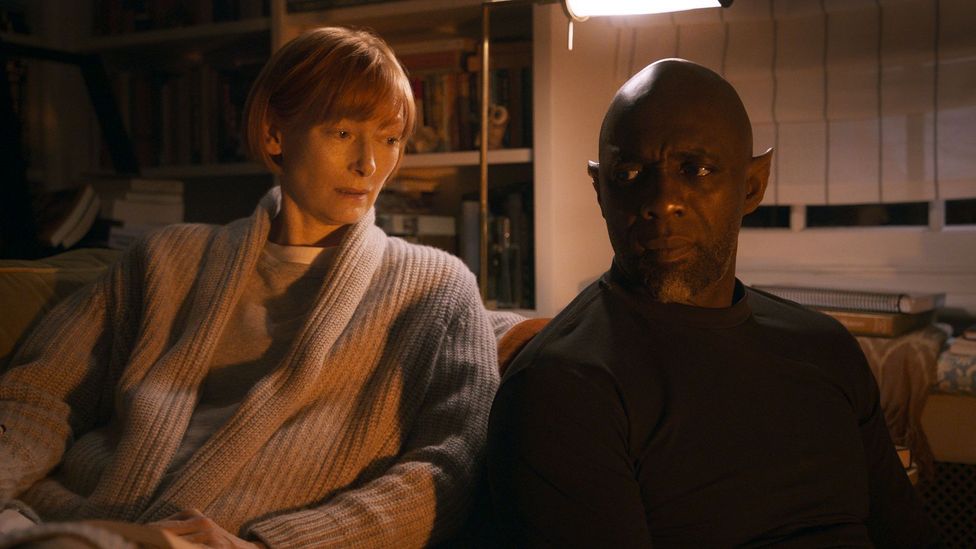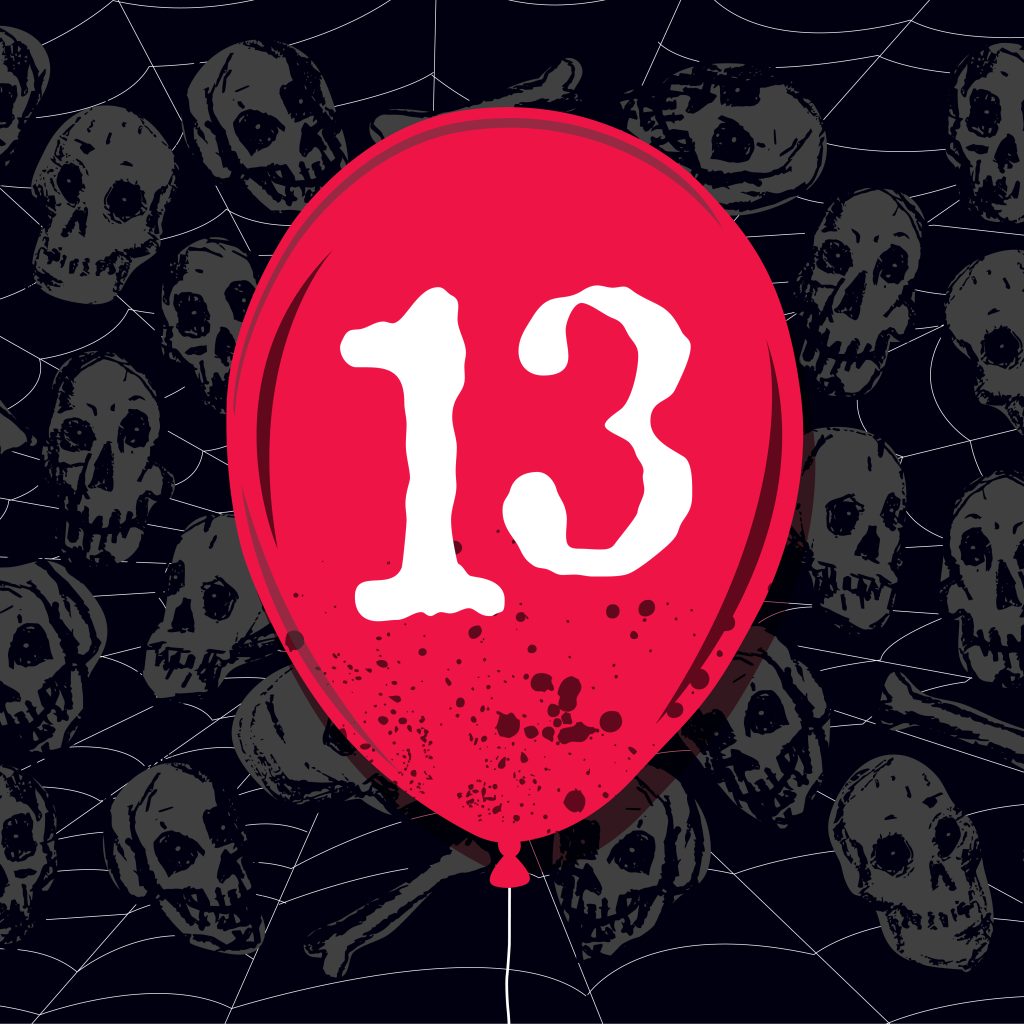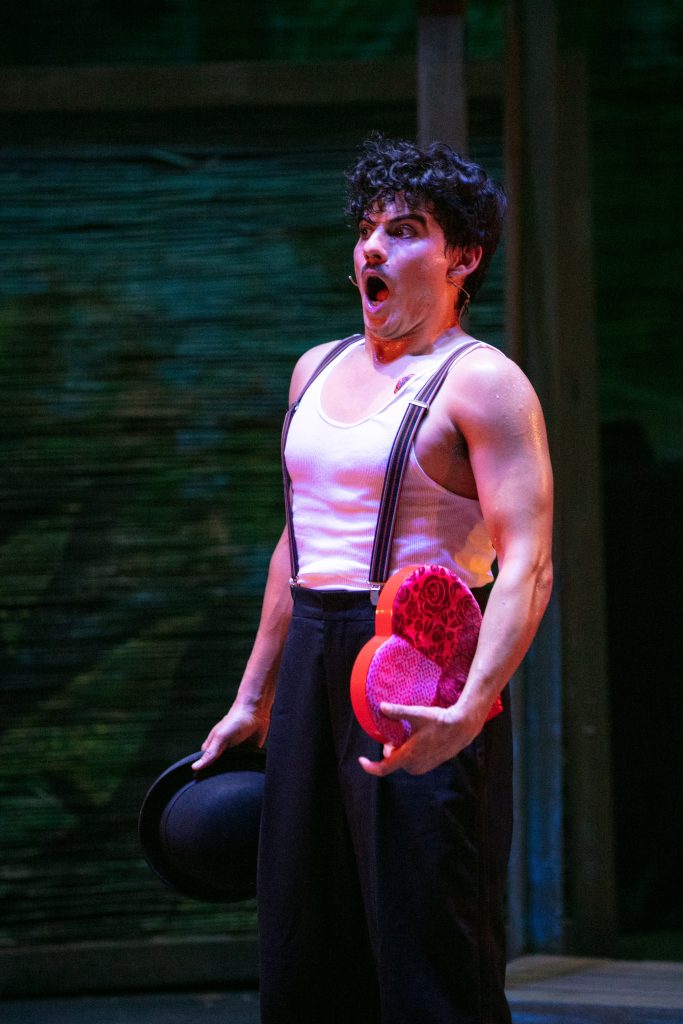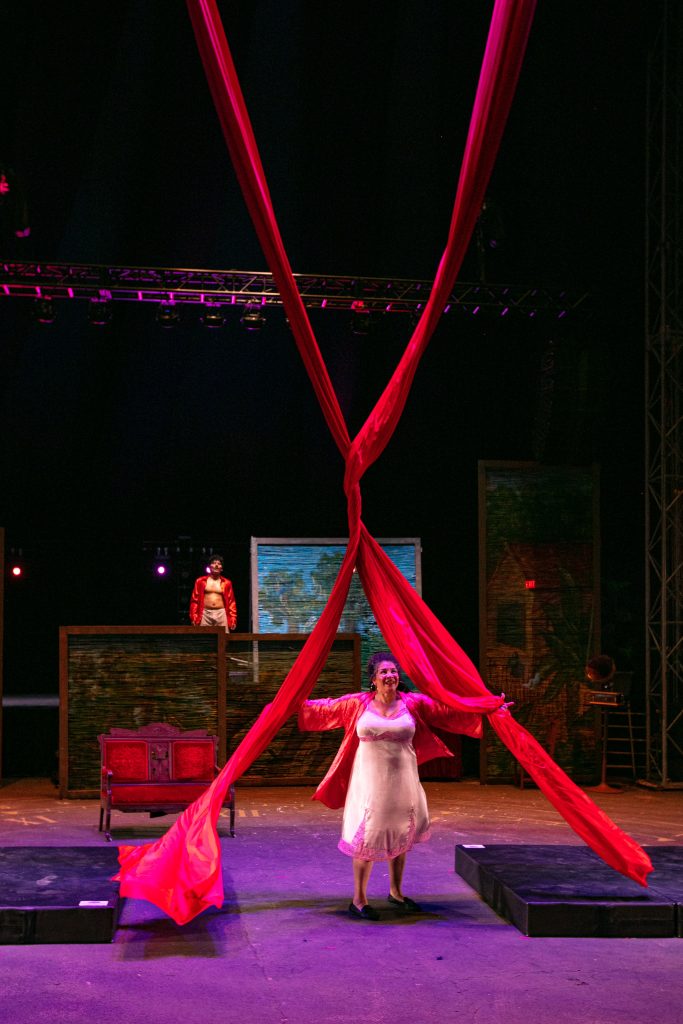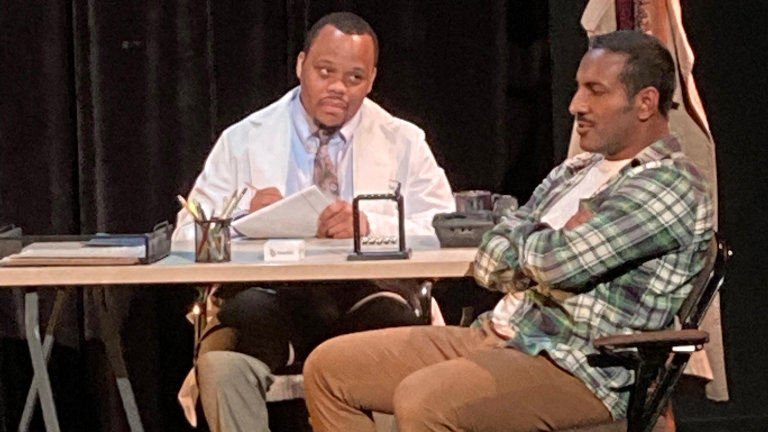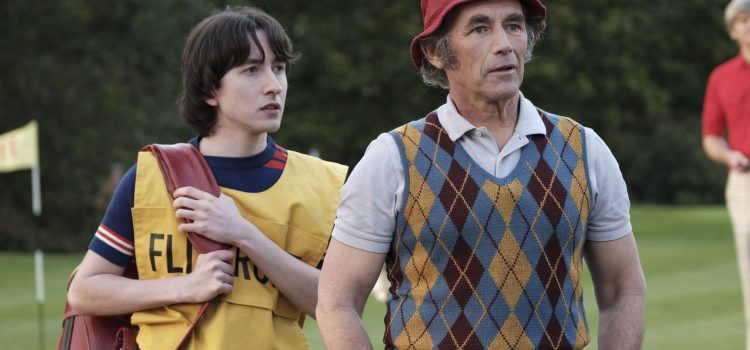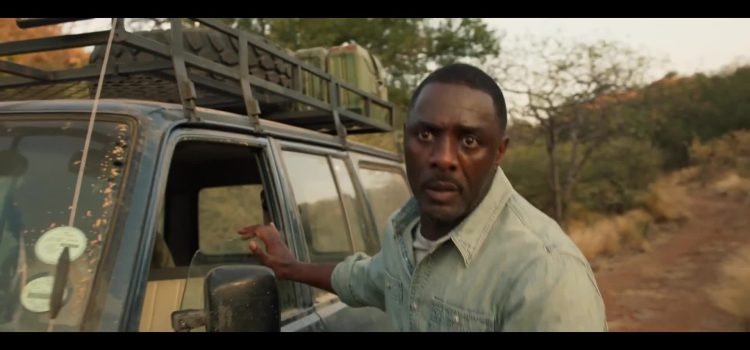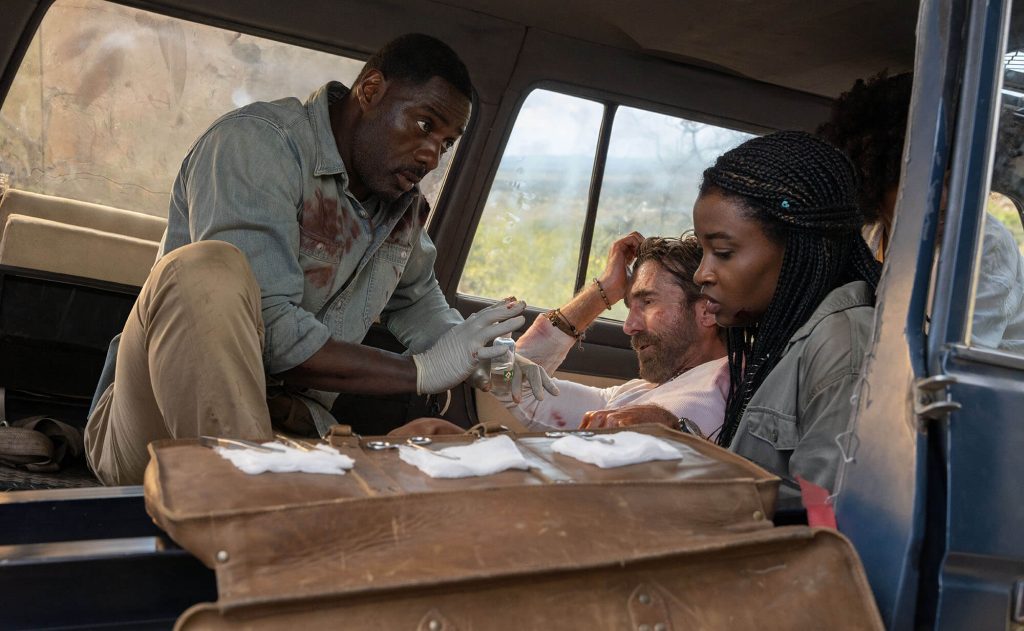By Lynn Venhaus
What treasures St. Louis Shakespeare Festival and our bi-state area public parks are! We are so fortunate to have such forward thinkers in our midst.
And because of these creative souls, ta-da! – we have a late summer treat in the form of a delightfully entertaining, high-energy Afrocentric interpretation of “A Midsummer Night’s Dream” with original music.
During August, the TourCo has been crossing rivers and county lines, going into both rural and urban areas, and providing access to the arts that these neighborhoods may not have otherwise. It’s a beautiful thing to be a part of –and the show is unlike anything you have seen before.
Six perspicacious performers present one of Shakespeare’s most beloved comedies by taking on multiple roles as young lovers, close-minded royal parents, mischievous fairies, and a goofy troupe of traveling actors on their way to perform at the Duke of Athens’ wedding.

The multi-talented Tre’von Griffith has directed with a clear vision, making the confusion and disorder lucid, showing us how love and joy win out in the end. Assistant director was Cameron Jamarr Davis.
The fleet-footed six dance and sing with a great deal of zest. Their spirited delivery spreads the fun by involving the audience, and it’s wonderful to see that connection. Stage Manager Britteny Henry makes sure everything moves swiftly.
That famous line: “The course of true love never did run smooth” is in this play, and that’s the crux. In Athens, Hermia is promised to Demetrius but loves Lysander. Meanwhile, Helena, Hermia’s best friend, loves Demetrius. It gets complicated when spells are cast in a magical forest, for fairies get mixed up in the romances when love potions are used on the wrong people.
A life force, Tiélere Cheatem plays Helena, Hippolyta (queen of the Amazons) and Peter Quince, and it is a graceful site, such lovely physicality to watch. Rae Davis excels as Hermia, Tom Snout and Titania (queen of the fairies), and the amusing Ricki Franklin easily switches from Demetrius to the goofball Nick Bottom – a cartwheel! — while Asha Futterman nimbly does double duty as Theseus (Duke of Athens) and Oberon (king of the fairies). Mel McCray is an agile Lysander and Francis Flute, and Christina Yancy is spry alternating as Egeus (Hermia’s father), Snug, Robin, and Puck.
Everyone should leave with a smile on their face and a song in their hearts.
Griffith, known as Tre-G, is a gifted artist and composer from St. Louis who graduated from the prestigious Berklee School of Music in Boston with a bachelor’s degree in music business and management. His original music enlivens the pared-down play – and the beat is contagious in getting the crowd into the show.
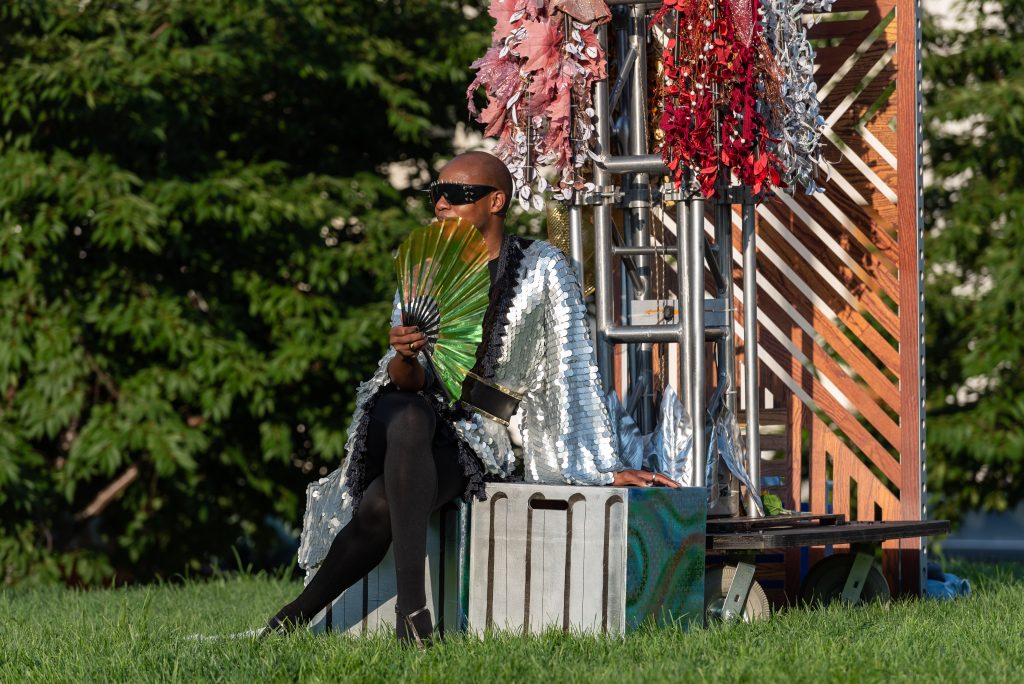
The imaginative costumes by local designer Brandin Vaughn are whimsical and cleverly separate the characters – and Cheatem rocks whatever he is wearing with great style.
Laura Skroska crafted a production design that is interesting, portable, and quick to assemble in all kinds of outdoor spaces.
So, what are you waiting for? You must make time to spend 90-minutes in its final free evening programs.
Originally scheduled for 24 shows, four remain (Aug. 24 – Jones Water Park in East St. Louis, Aug. 25 – Shaw Park in Clayton, Aug. 26 – Chroma Plaza in the Grove, Aug. 27 – Hermann, Mo., and final night is Tuesday, Aug. 30, the rescheduled Tower Grove Park performance, which had been rained out.
The show starts at 6:30 p.m. and ends at 8 p.m. Bring your own chair or blanket. Guests can bring their own food and drink, and some sites sell items, too.
Go!
Live theater has enriched my life immeasurably, and one of the best experiences is to witness a production outside with an audience of all ages and walks of life. Connecting with others through the arts is one of life’s greatest pleasures.
One summer night growing up in Belleville, Ill., the neighborhood public school put on a version of “Tom Sawyer” on their grounds. I recall benches were placed in an alcove, but I don’t remember what age the cast members were — all I know was I was entranced. This was in the mid-1960s, and as the oldest of five kids raised by a single mom, we had very little money for extra things. The arts opened a whole new world.
Free theater! I never forgot that opportunity, and throughout my previous life staging shows outside, I marveled at the melding of art and the outdoors – it seemed so natural.
(And later, I’d realize how much work they were – moving everything outside! But I digress…And fun fact, a local professional actor who often is part of the big summer show in Shakespeare Glen was in that grade school play I saw. Small world, full circle, six degrees…and so forth).

I have been fortunate to review the festival since 2013, and one of my favorites was “A Midsummer Night’s Dream” the summer of 2016. It was so inspired and playful. This one, too, is doused in fairy dust. While it helps to know the basics, really the way they prepare the show makes it easy to follow for all of us.
Because my June schedule prevented me from coming earlier, I headed to the picturesque village of Brussels, Ill., population 112, on Sunday, Aug. 21, a place I hadn’t been to in 25 years! In the fall of 1997, I had taken my two sons hiking in Pere Marquette State Park and we took the Brussels Ferry across the Illinois River. This time, now living in St. Louis, I drove to St. Charles and crossed the Mississippi River on the Golden Eagle Ferry.
Winding through the narrow roads of Calhoun County, I found the town center on Main Street – and saw folks in lawn chairs at Heritage Park, enjoying the pleasant sunny day and festive spirit. The music and the likable performers were engaging everyone, and Community Engagement Manager Adam Flores warmly welcomed those gathered.
It was such a joyous communal experience – and to see people coming up to the performers afterwards to say how much they enjoyed it, well, what’s better? (And we had time to get to the ferry as twilight fell!).
The St. Louis Shakespeare Festival started fostering community and continuing the Shakespearean tradition of art for all in 2001, when they first presented a free show for two weeks in Forest Park – “Romeo and Juliet.” Now a month long in Shakespeare Glen that attracts thousands, the free event is the start to summer for many St. Louisans.
St Louis Shakes doesn’t end with the big show – which was the fun and funny “Much Ado About Nothing” this June – because the TourCo works their summer magic throughout the region, and come September, we have the annual free Shakespeare in the Streets to look forward to – and this year, it’s in my old neighborhood of Bevo Mill, at the intersection of Morgan Ford Road and Gravois Avenue Sept. 22-24.
The focus will be on our thriving immigrant population in the city’s southside. Deanna Jent, who did so much work with the Bosnian Project through Fontbonne University, has written this Shakespeare adaptation with them in mind.
This December, the one and only Q Brothers Collective will present their version of “A Christmas Carol.” Winner of multiple St. Louis Theater Circle Awards for their hilarious “Dress the Part” two-hander in the ‘before times’ of early 2020, I’ve heard their audio version – courtesy of the walking tour in the Central West End in the pandemic wintertime of 2020 — and I’m ready to see their fresh take at the National Blues Museum Nov. 25-Dec. 23.
You won’t want to miss any of it.

For more information, visit www.stlshakes.org.
Guests are encouraged to call ahead to the Box Office (314-287-3348) with any park accessibility questions for the tour date they plan to attend.
It is always their hope to perform, so the decision to hold or cancel the show is rarely made before showtime (6:30 pm). In the event of bad weather, the performance may be delayed. Check social @stlshakesfest across platforms for updates or call 314•287•3348.
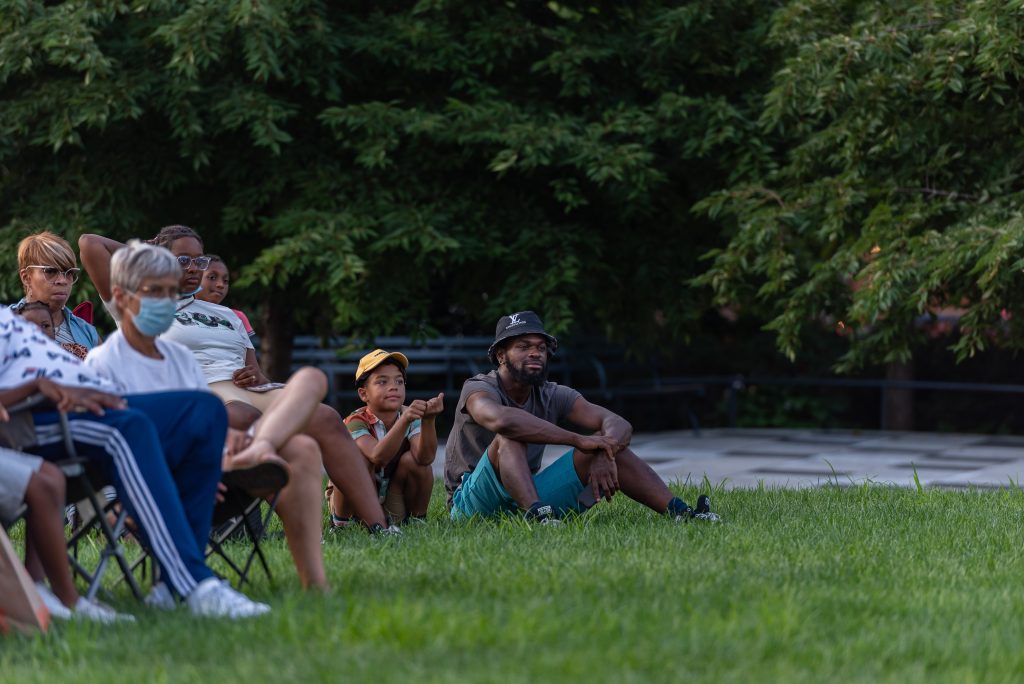

Lynn (Zipfel) Venhaus has had a continuous byline in St. Louis metro region publications since 1978. She writes features and news for Belleville News-Democrat and contributes to St. Louis magazine and other publications.
She is a Rotten Tomatoes-approved film critic, currently reviews films for Webster-Kirkwood Times and KTRS Radio, covers entertainment for PopLifeSTL.com and co-hosts podcast PopLifeSTL.com…Presents.
She is a member of Critics Choice Association, where she serves on the women’s and marketing committees; Alliance of Women Film Journalists; and on the board of the St. Louis Film Critics Association. She is a founding and board member of the St. Louis Theater Circle.
She is retired from teaching journalism/media as an adjunct college instructor.


